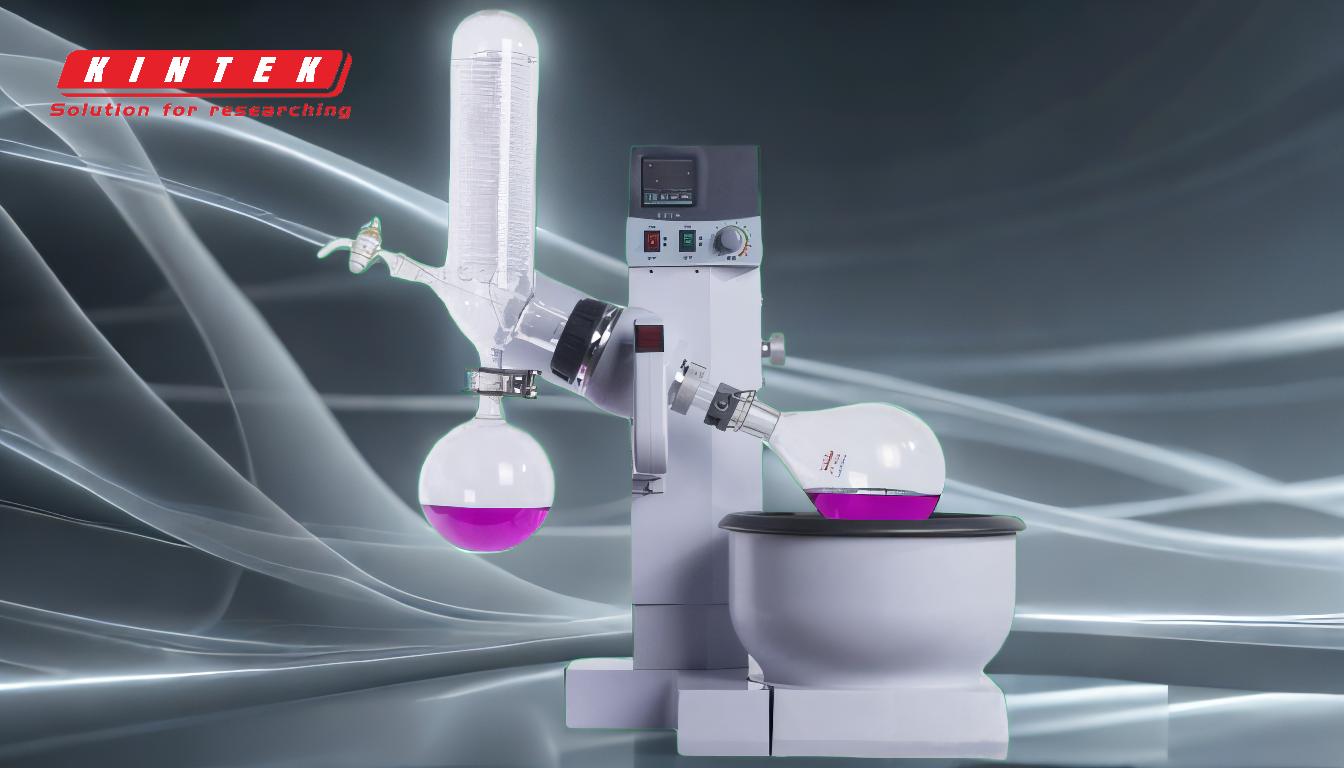A rotary evaporator (rotavap) is a critical piece of equipment in chemical laboratories, primarily used for solvent evaporation under reduced pressure. The pump is a crucial component, as it creates the vacuum necessary to lower the boiling point of the solvent, enabling efficient evaporation. Two main types of pumps are commonly used in rotary evaporators: diaphragm (membrane) pumps and rotary vane pumps. Diaphragm pumps are ideal for general-purpose applications and are maintenance-free, while rotary vane pumps are better suited for high-vacuum applications but require regular maintenance. For solvents with high boiling points, an oil pump may be used instead of a water pump. The choice of pump depends on the specific requirements of the solvent and the desired vacuum level.
Key Points Explained:

-
Purpose of the Pump in a Rotary Evaporator:
- The pump creates a vacuum within the system, reducing the pressure and lowering the boiling point of the solvent. This allows for efficient evaporation at lower temperatures, minimizing the risk of thermal degradation of sensitive samples.
-
Types of Pumps Used:
-
Diaphragm (Membrane) Pumps:
- Suitable for general-purpose applications.
- Maintenance-free and resistant to chemical corrosion.
- Ideal for solvents with moderate boiling points.
-
Rotary Vane Pumps:
- Capable of achieving higher vacuum levels.
- Suitable for solvents with high boiling points.
- Require regular maintenance, including oil changes and vane replacements.
-
Oil Pumps:
- Used for solvents with very high boiling points.
- Provide a deeper vacuum compared to water pumps.
- Require careful handling and maintenance to avoid contamination.
-
Diaphragm (Membrane) Pumps:
-
Factors Influencing Pump Selection:
-
Solvent Properties:
- The boiling point and chemical compatibility of the solvent determine the type of pump required.
-
Vacuum Level:
- Different pumps offer varying levels of vacuum, impacting the efficiency of solvent evaporation.
-
Maintenance Requirements:
- Diaphragm pumps are low-maintenance, while rotary vane and oil pumps require more frequent upkeep.
-
Solvent Properties:
-
Integration with Other Components:
- The pump works in conjunction with the rotating flask, heating bath, and condenser to ensure efficient solvent removal.
- The rotating flask increases the surface area for evaporation, while the heating bath provides the necessary thermal energy.
- The condenser cools and recondenses the solvent vapors, which are then collected in the receiving flask.
-
Considerations for Equipment Purchasers:
-
Application Requirements:
- Assess the types of solvents and samples to be processed to determine the appropriate pump type.
-
Budget and Maintenance:
- Consider the initial cost and long-term maintenance requirements of the pump.
-
Compatibility:
- Ensure the pump is compatible with other components of the rotary evaporator system.
-
Application Requirements:
By understanding the role and types of pumps used in rotary evaporators, purchasers can make informed decisions to optimize their laboratory processes and ensure efficient solvent recovery.
Summary Table:
| Pump Type | Applications | Maintenance | Vacuum Level |
|---|---|---|---|
| Diaphragm (Membrane) | General-purpose, moderate BP | Maintenance-free | Moderate |
| Rotary Vane | High-vacuum, high BP solvents | Regular maintenance | High |
| Oil Pumps | Very high BP solvents | High maintenance | Deep |
Need help selecting the right pump for your rotary evaporator? Contact our experts today for personalized advice!









